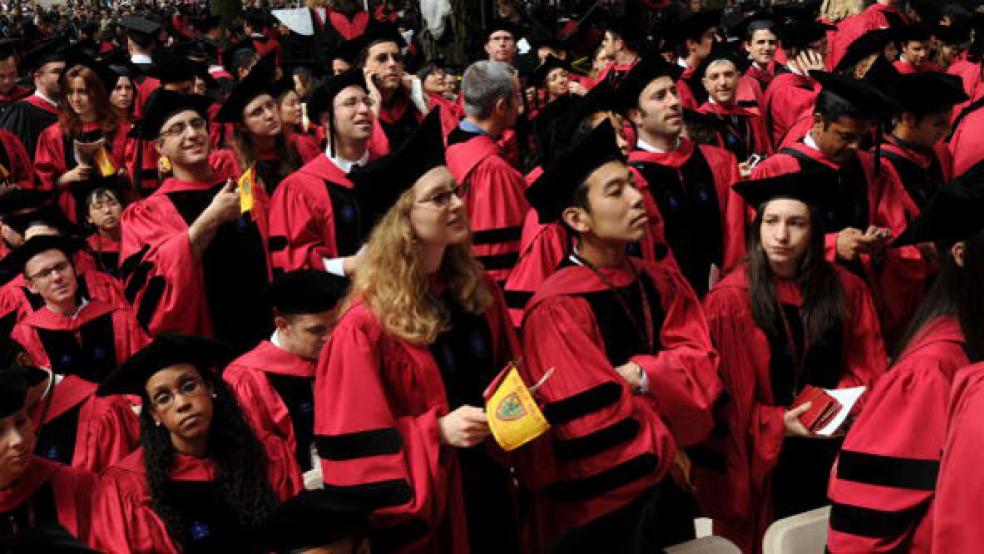As you read this, the last undecided applicants to the college class of 2014 are making up their minds about which schools to attend next year. Their parents are swallowing hard and wondering how to pay for it. Judging from previous years, some 16 million families will ask for financial aid, and the vast majority will borrow at least some of the money. But 2010 will be different in at least one way. Starting July 1, for the first time in more than 50 years, none of those college-bound families will get their loans from banks.
That may not sound earth-shattering, but in that change resides a rare triumph of fiscal sanity. According to the Congressional Budget Office, eliminating banks as middle men for federally guaranteed college loans will save $68 billion over the next 11 years, with little or no reduction in services. True, $68 billion is a mere snowflake on top of a $1.3 trillion deficit iceberg (and much of the savings is going to new loans), but we’ll take what we can get.
You might have missed the student loan overhaul, since it arrived literally as a footnote to health care reform last month. Democrats attached college funding changes to the health care reconciliation bill, and, as a result, any debate about student loans was drowned out by the health care drama. That doesn’t mean everyone agreed. The Consumer Banking Association bitterly protested the end of subsidies, and Sallie Mae, the former government sponsored entity that is now the field’s largest lender, spent an estimated $3 million lobbying against it. Republican Senator Lamar Alexander of Tennessee, a former federal secretary of education, called the new law “…a Washington takeover of student loans” and “just one more example of a long line of Washington takeovers of banks, insurance companies, car companies, [and] health care.”
That’s one way of looking at it. But the history of the program and its effect on the budget suggests that the more reasonable reaction might be, “How can we get more like this?”
The Federal Family Education Loan Program (FFELP) was launched in 1965 to distribute federally guaranteed loans through banks. Legislators reasoned that bankers would do a better job originating loans than the Department of Education, but the program also got a push from an astonishing blind spot of federal budget accounting: on Uncle Sam’s books, a loan counted as an expense, with no provision for future repayments or interest. The government had every incentive to get the loan off its own books, but since no lender would risk its own capital on a student with no job and no collateral, the government had to guarantee the loan.
It was a recipe for pork. “The banks saw this amazing opportunity to take all the profits while the federal government took all the risk,” says Barnak Nassirian, associate executive director of external relations at American Association of Collegiate Registrars and Admissions Officers. Not only would the government pay the bank a fee for originating the loan and repay the bank if the student defaulted; the feds would also shield the bank from interest rate fluctuations, paying an extra “special allowance” if rates rose, but allowing it to pocket the profits if rates fell. Under such sweetheart terms, lenders had every incentive to lend as much as possible—and no incentive to make sure that a loan applicant had a prayer of repaying.
By 1990, the system was a wreck—unless you were a bank. Some 22 percent of loans were defaulting and the government’s costs were skyrocketing, while student loans were more profitable for lenders than credit cards. The rates for fees and subsidies were set by a political process,” explains Terry Hartle, head of the division of Government and Public Affairs at the American Council on Education. “And when you have prices set by politics, not the market, you often get prices that are too high.” Excess profits begat corruption. Scandal roiled through state affiliated-secondary loan markets (which bought student loans from banks and Sallie Mae), through guarantee agents, (which provided insurance on top of the federal guarantee), and through lenders themselves, which lavished perks on college financial aid officers in return for steering students their way. “It costs 10 times as much to lend through banks as through direct loans,” says Nassirian. “That has nothing to do with greater efficiencies and everything to do with bankers’ profits.”
Now students will get all their loans directly from the Treasury, by way of their college’s financial aid office. The change will likely be invisible to families and will be simpler for schools, which will have to deal with just one lender. True, students will have fewer choices, but since the terms of all government-backed loans are standard whether you borrow from a bank or directly, choice was never really the issue.
The real issue may be the one raised in last Sunday’s New York Times by George Mason University economist Tyler Cowen, who contrasted Americans’ seeming inability to cut government spending with the success of countries from Canada to Sweden. One attribute of those countries, Cowen writes, is trust in government, not exactly a strong feature in the U.S. political mindscape. Still, if U.S. legislators are ever to get their arms around our impending fiscal crises, they must eliminate wasteful programs, even if that means standing up to lobbyists and to claims that ending subsidies is somehow a blow against freedom. The end of subsidized student bank loans is about as clear an example as you can find that government sometimes gets that tough job right. Let’s hope voters are paying attention.
Reporter: Temma Ehrenfeld
Eric Schurenberg is Editor in Chief of BNET, the CBS Business Network





